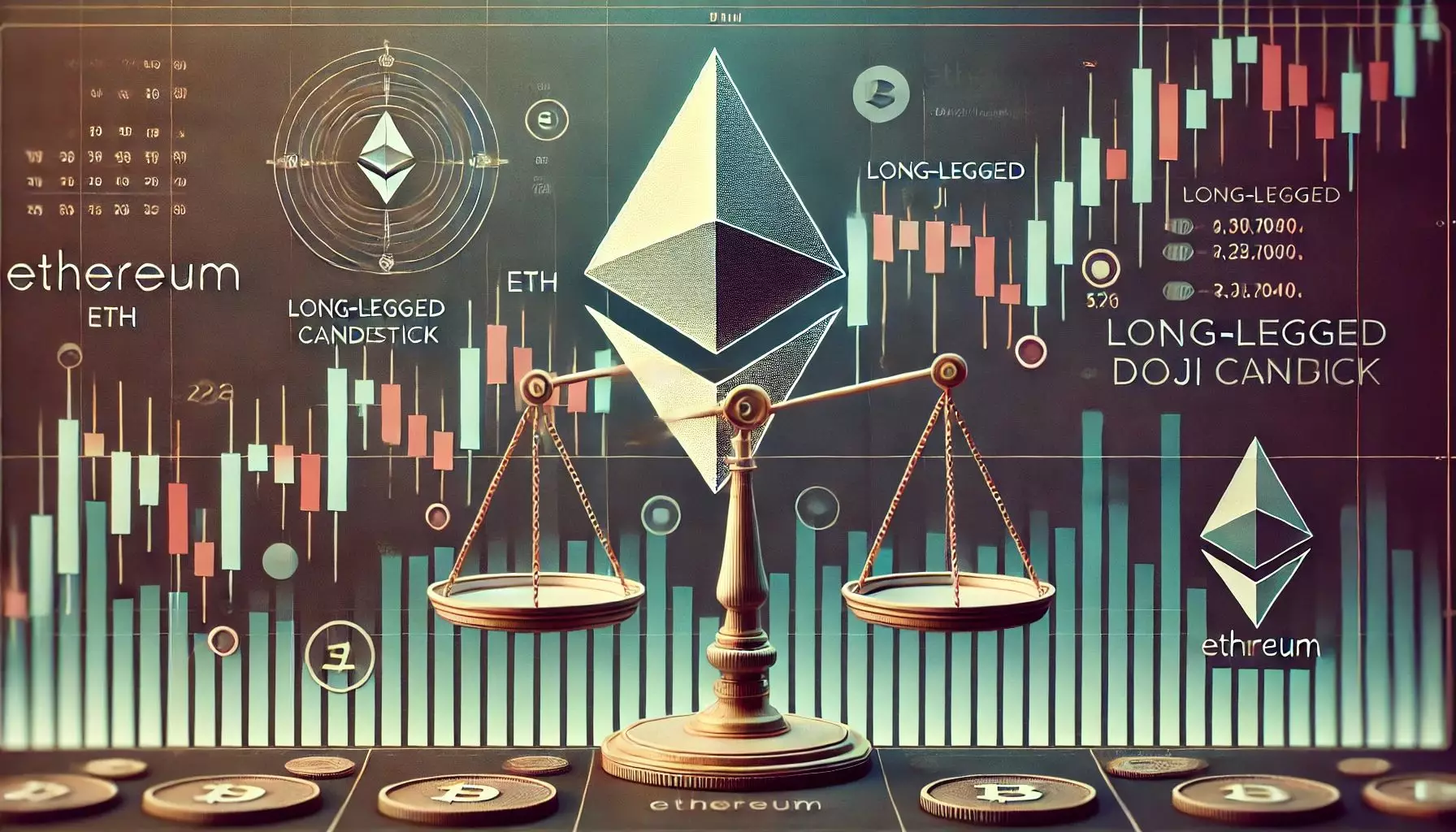The resilience of Ethereum in the volatile cryptocurrency market is under scrutiny as it hovers stubbornly around the $1,800 mark. Despite previous attempts to reclaim higher ground, we face a scenario rife with uncertainty. The critical factors affecting Ethereum are not just technical indicators; they collectively tell a cautionary tale about market sentiments and the broader implications for altcoin traders.
The Indecisive Candle: A Signal of Market Uncertainty
At this juncture, one of the most telling signs is the emergence of a long-legged Doji candle on Ethereum’s monthly chart—essentially a symbol of market indecision. This formation indicates a standoff between bullish and bearish sentiments, suggesting that market participants are grappling with where the cryptocurrency is headed. The emergence of the Doji after a prolonged downtrend has implications that can’t be overstated: it’s often a precursor to a trend reversal.
Technical analysis remains crucial in deciphering these signals. Should Ethereum manage to break above $2,000, it would not only confirm bullish intent but create the possibility of a more sustained upward trajectory. Conversely, failure to surpass this threshold indicates a persistent bearish backdrop, where price movements risk heading back toward deeper support levels like $1,700 or even $1,500. Currently, with ETH trading at around $1,830, the margin for both optimism and pessimism is razor-thin, rendering traders on edge.
Comparison with Bitcoin: The Altcoin Dilemma
At present, Ethereum finds itself lumbering behind Bitcoin, which has outperformed it substantially this past year. The juxtaposition is alarming; while Bitcoin has ascended to new heights, Ethereum remains a staggering 55% down from its December peaks. The strong correlation between BTC and ETH highlights the altcoin’s vulnerability, raising questions about its long-term viability and appeal to traders weighing their options.
In market dynamics, having Bitcoin lead the pack often places altcoins in a speculative limbo. Bulls who wish to rally for Ethereum often find themselves overshadowed by Bitcoin’s momentum, leading to an inherent risk aversion when it comes to investing in the former. The continued underperformance could deter potential investors, driving Ethereum deeper into a consolidation phase—a perilous outcome in such a rapidly changing environment.
A Squeeze Building: Risks and Opportunities
The tight price range Ethereum is currently trapped in—a fluctuation between $1,750 and $1,850—has created an environment ripe for volatility. Traders are now in a precarious position, locked in a standoff waiting for a decisive breakout. The diminishing trading volume during upward movements is concerning, suggesting diminished bullish momentum. Should the market ultimately favor a downward trend, the implications are stark; further testing of support zones could create panic selling, cascading to levels near $1,700 or lower.
However, this waiting game is not devoid of opportunity. With mounting pressure on the price, a dramatic breakthrough could potentially inspire renewed confidence. Should we see Ethereum reclaim the $2,000 zone, it would energize bulls and invite a wave of fresh buying interest. The paradox lies in the very basis of speculation; as uncertainty looms, volatility creates both fear and potential profit for discerning traders.
Macro-Economic Factors: The Invisible Hand
A variety of macroeconomic factors also intersect with Ethereum’s future—ranging from regulatory changes, inflation rates, and general market liquidity. Much of the uncertainty surrounding the market is significantly influenced by these larger forces, where external pressures affect investor psychology. As traits such as inflation and geopolitical tensions permeate public sentiment, the resonance is felt right down to trading floors.
Most notably, the interaction between political stability and crypto markets is something that traders must watch closely. Market confidence can shift quickly, and when external conditions tilt toward negativity, cryptocurrencies like Ethereum can quickly go from a safe harbor to an unwanted liability. Thus, it’s imperative for investors to remain vigilant to these broader dynamics as they navigate their strategies within this dense financial landscape.
Impending Bearish Scenarios: Should We Be Worried?
Facing the threats of a further downward spiral, current conditions necessitate a sobering viewpoint. While the bullish narrative is enticing, it often distracts from the pressing realities that could push Ethereum down the rabbit hole. The psychological aspect of trading is inherently tied to market performance; an inability to break key resistance would not just be a technical failure but a potential trigger for panic among investors.
Failing to hold above the critical support of $1,800 could act as a harbinger of deeper losses. Traders should not underestimate the power of market sentiment and the collective psychology of the trading populace, as fear often outweighs rational thought in moments of failure. Ethereum is at a critical juncture, one that calls for astute awareness and proactive engagement as we tread through this uncertain financial terrain.















Leave a Reply